There are many benefits to adding a mini wildlife pond to your outdoor space. Besides creating an attractive and tranquil feature for you to enjoy, it could also be a haven for lots of different wildlife. If you get it right, then you could attract all kinds of visitors, such as insects, frogs, newts and even birds and hedgehogs. Many of these visitors will be beneficial to your garden and some may even act as a natural pest control.
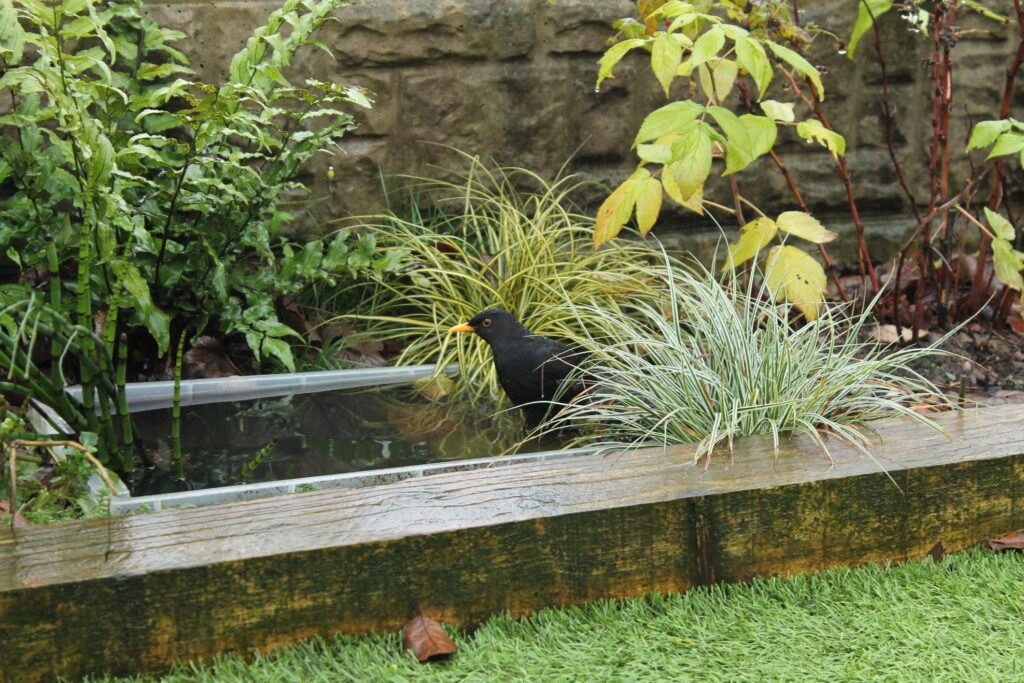
Your pond doesn’t need to be very big, and it can cost almost nothing at all to get started. Here is a quick step by step guide to get you inspired…
1. Find A Container
You’ll need to start by finding a suitable container. Of course, it’s best to find something water-tight, but you can always seal up any leaks or add a pond liner if required. There are various items that might work well – an old sink, a large pot, a half barrel or even a large washing bowl.
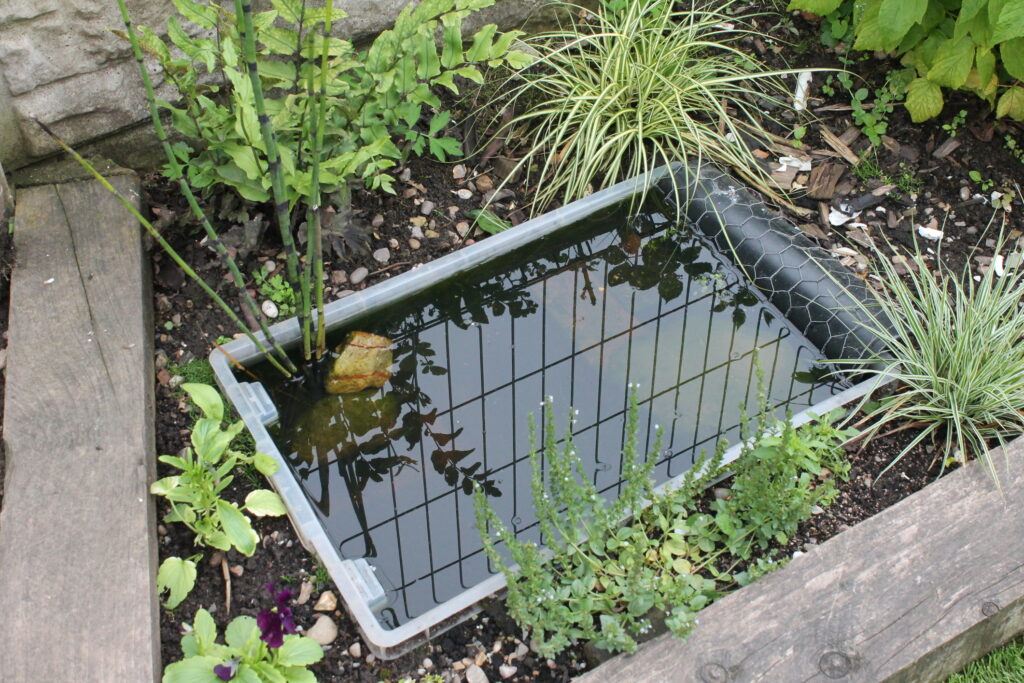
If you don’t have anything that can be re-purposed, then you could buy yourself a purpose made pond liner. Besides digging a hole and adding a sheet of pond liner, there are also solid, prefabricated pond liners – usually plastic or fibreglass, which come in a variety of shapes and sizes.
2. Choose A Good Location
Where you place your mini wildlife pond will have a big impact on how successful it is, and what kind of visitors you might attract. To begin with, think about the amount of natural sunlight available in your outdoor space. Where are the sunny spots in your garden and where are the shady areas? Ideally, your pond will have some direct sunlight, but not necessarily for the whole day. If you only have a very exposed area to work with, then don’t worry, you could provide some shelter and light shade with some strategic planting, pots or other features.
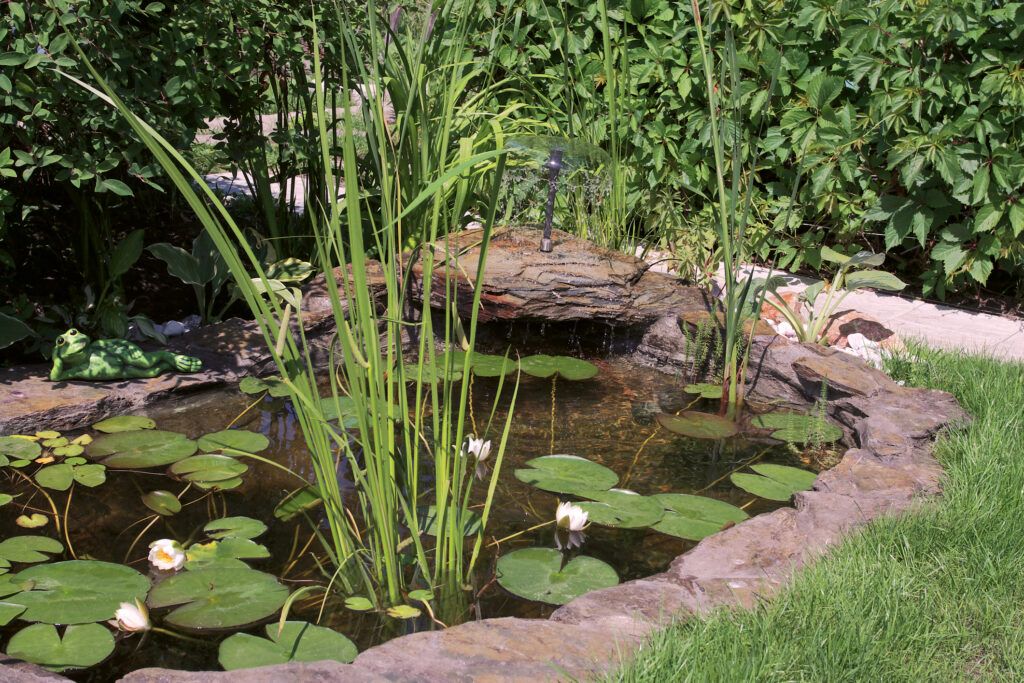
A fairly quiet spot will be best for attracting wildlife. If there are some hiding places nearby, then this might encourage frogs and other guests. Consider keeping some other little pockets of ‘wild’ areas nearby – such as long grasses, shrubs or even small piles of rocks or stones.
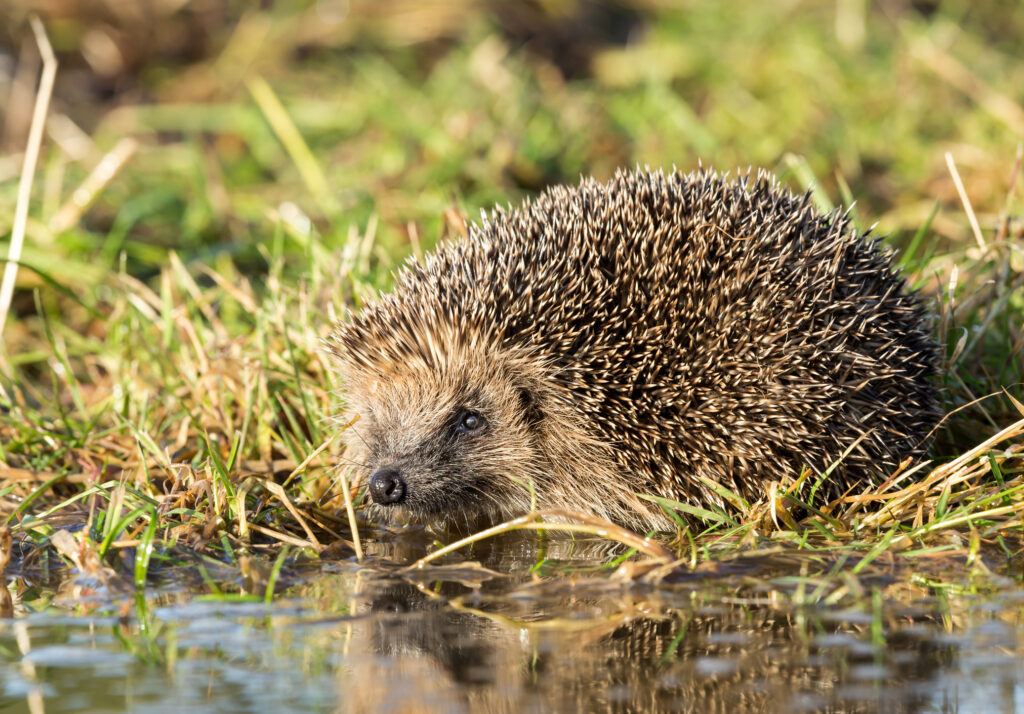
Finally, think about how wildlife will access your pond. If you plan to dig a hole and sink your pond at around ground level then this is obviously easier for most creatures. If you pond is raised, then you might need to consider providing some steps or a slope of some kind – as covered in the next section.
3. Add Gravel, Stones and Rocks
Whichever type of liner you choose, you’ll probably want to cover the bottom with small stones or gravel. This will make it a more inviting place for insects and other wildlife to make it their home. As mentioned in the previous section, you could also use some larger rocks and stones to improve access. Ideally it’s good to create layers at different depths around the pond and also provide steps or a slope to help creatures get in and out.
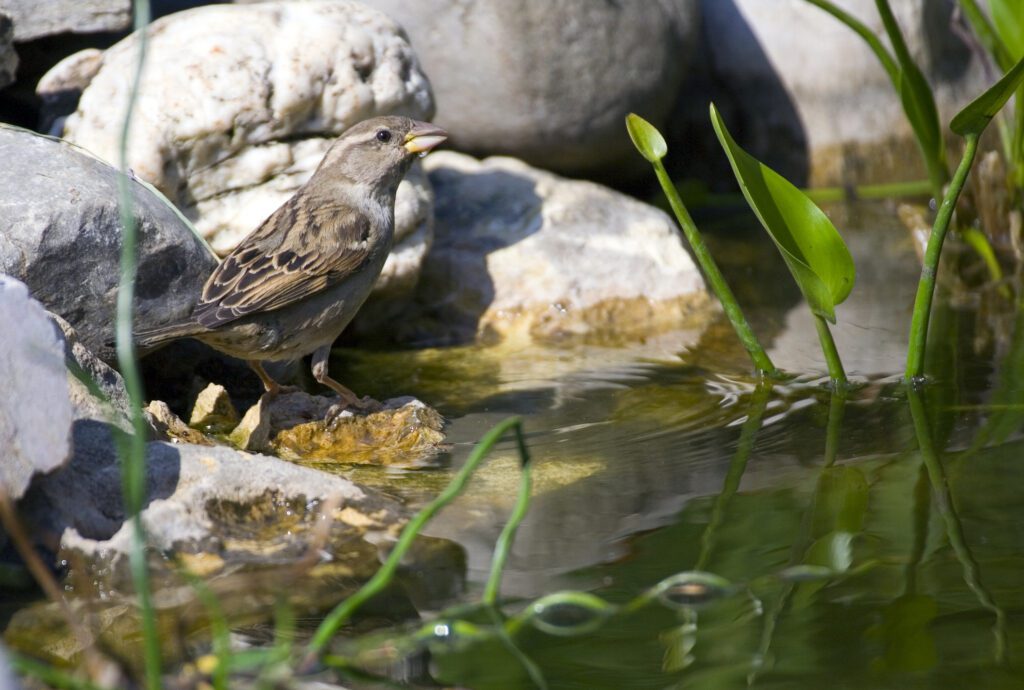
Besides the obvious guests – bugs, frogs, toads etc… think also about those that might just visit for a drink or even a quick bath! Most creatures are drawn to water at times and this includes birds, hedgehogs, bats and even bees. By having a variety of depths and levels for visitors to access your pond, you’ll make it all the more inviting for them.
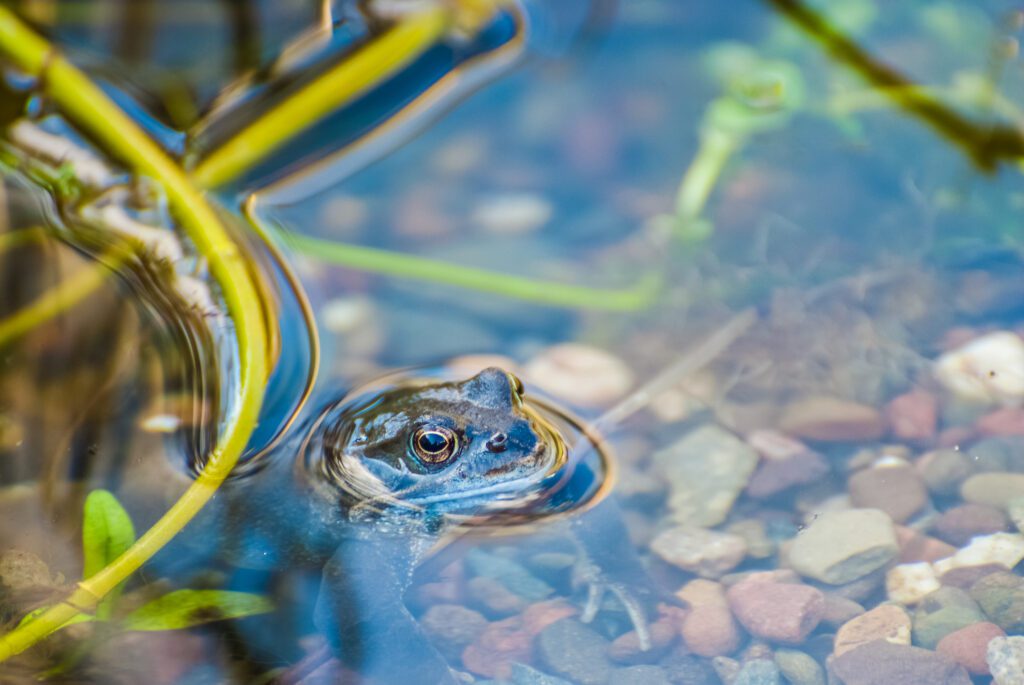
4. Fill With Water
Perhaps the most obvious step – your pond will need to be filled with water. Avoid filling it with tap water, which contains chemicals. It’s best to use rainwater from something like a water butt or you could collect rainwater in a bucket over time if the weather is right. If you’re in a rush and don’t have access to rainwater, then you could use tap water but leave it out in another container for at least 24 hours to allow the chlorine to evaporate.
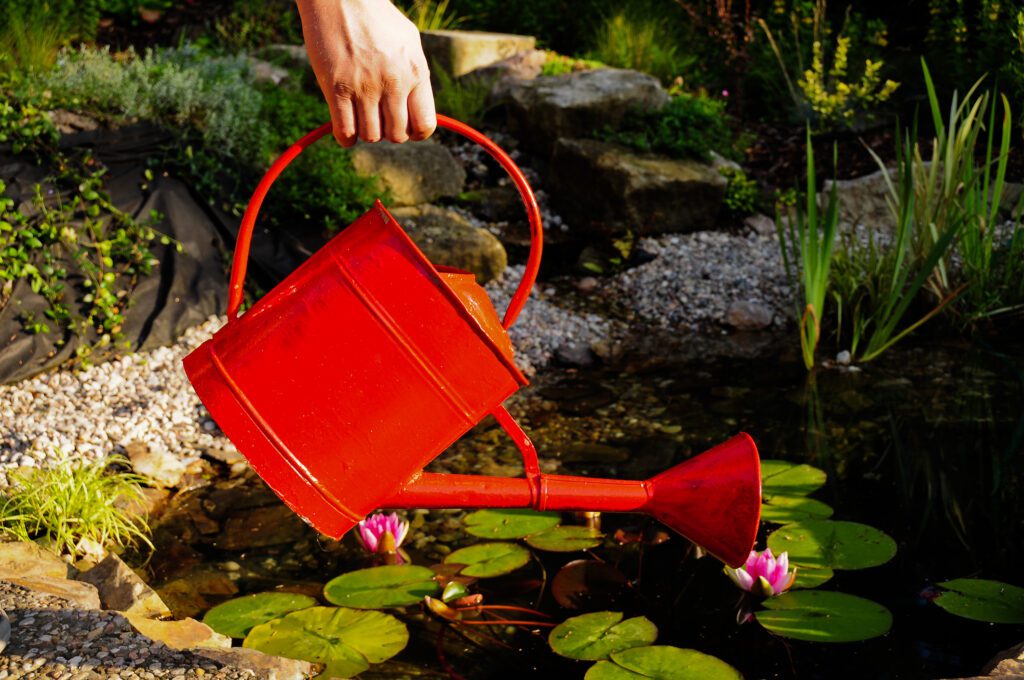
In very hot, dry weather, you might notice your pond level drop a little. Therefore, it’s always best to keep an eye on it and be prepared to top up the level as required in warmer weather.
5. Add Aquatic Plants
It really is worth adding some aquatic plants to your new pond as there are various benefits. Try to stick with native plants that will thrive in your local climate without any extra effort. These will also be the best for your wildlife, as they’ll be in keeping with the plants found in local rivers, streams and ponds.
Some plants will help to keep the water in your pond clear – these are generally known as ‘oxygenators’ and often grow best below the water surface.
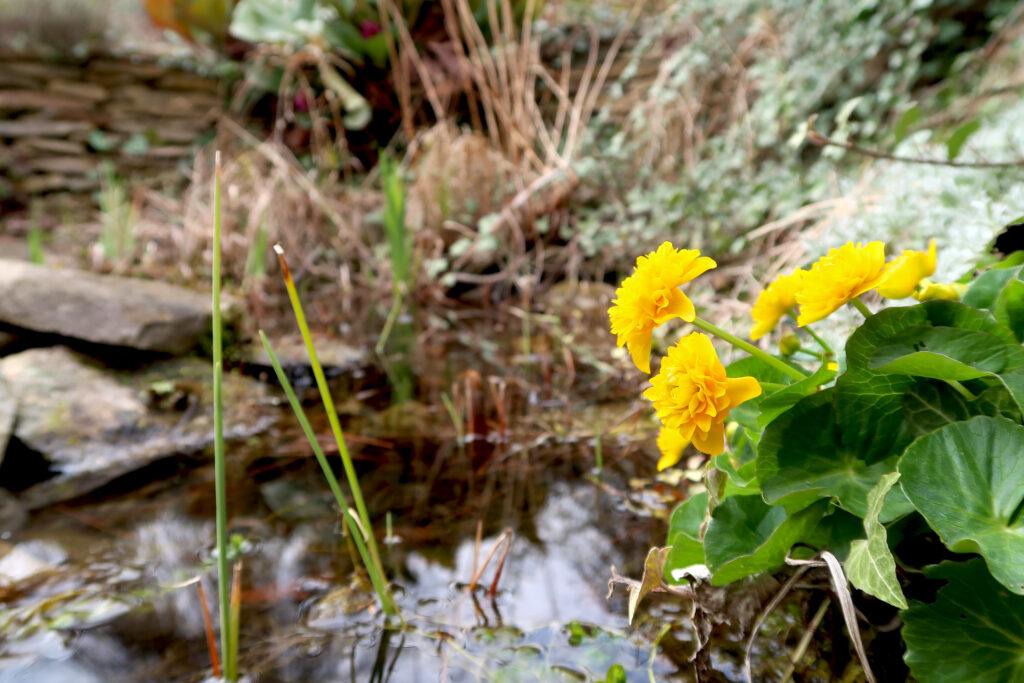
Other kinds might be floating or ‘marginal’ plants, which are happy in the water but have foliage above the surface, providing shade, cover and sometimes even flowers. Floating plants, well…float… as you might expect. Marginal plants are usually best placed around the shallow edges of your wildlife pond.
Water Violet is a good oxygenating option here in the UK. Other great options are Hornwort or Spiked Water Milfoil, both of which also provide a great hiding place for aquatic bugs and things like tadpoles.
For marginal plants try Water Forget-Me-Nots with their elegant blue flowers or Marsh Marigolds with tall yellow flowers.
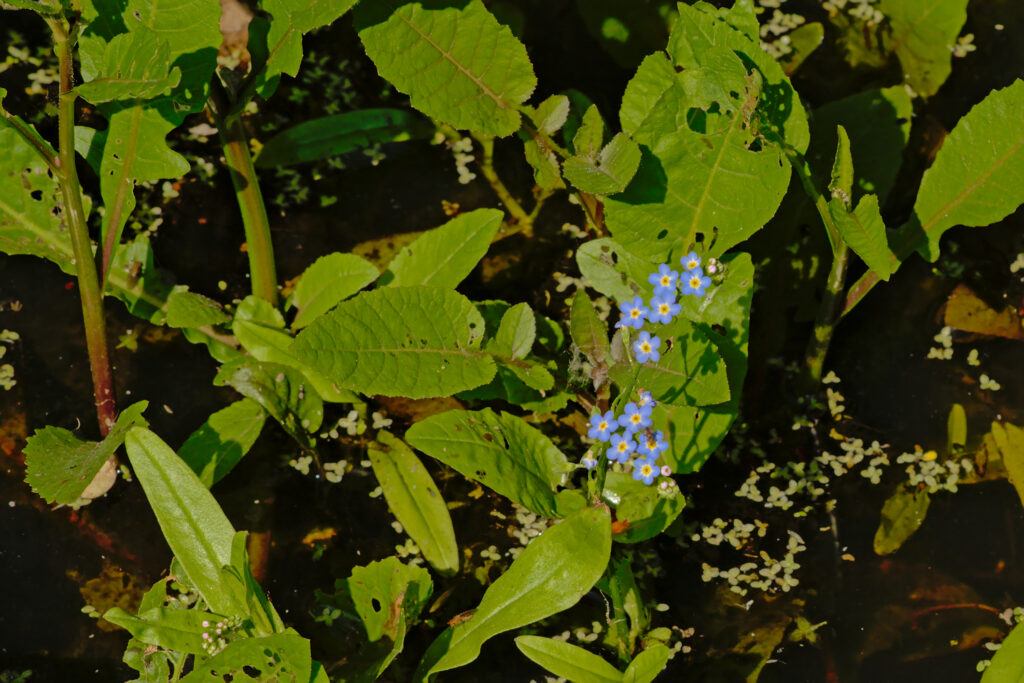
For floating aquatic plants, there are some interesting options. Frogbit has tiny round leaves which look a bit like miniature lily pads. Otherwise, Water Crowfoot is an attractive perennial with yellow and white flowers in late spring.
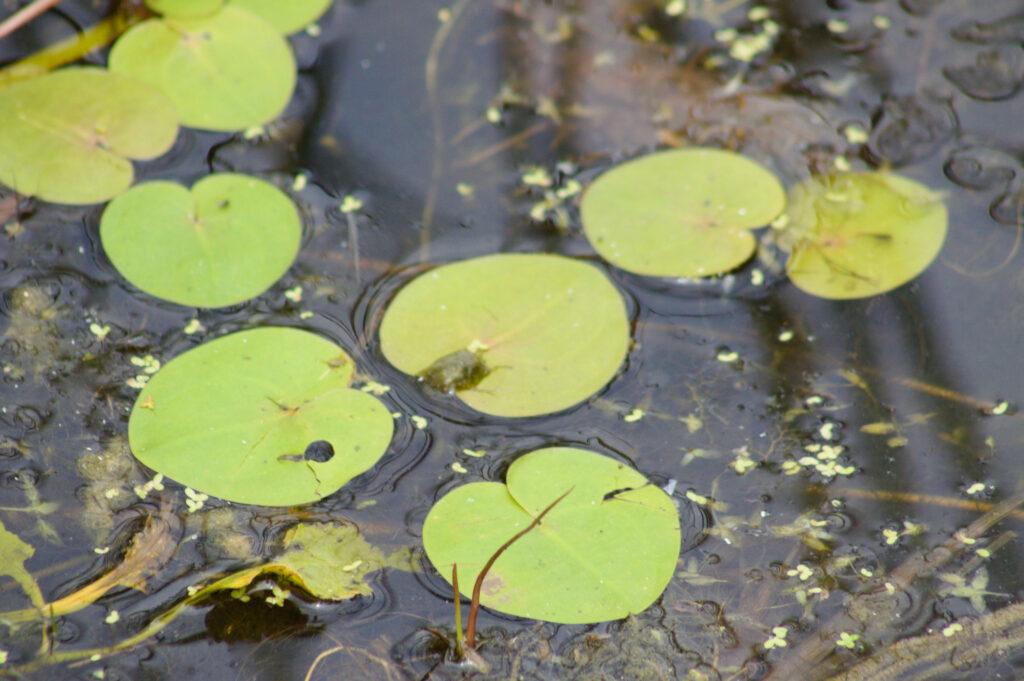
What About Pumps, Filters and Fountains?
You might be wondering about what extra kit you might need for your wildlife pond. You shouldn’t really need a pump or filter to keep the water clean, as wildlife ponds are surprisingly good at looking after themselves. Even if your water is a little murky, you can improve the cleanliness by adding the rights plants as covered in the last section.
However, you might like to add a small pump of some kind to create an attractive water feature. Many people find the sound of trickling water to be very relaxing and you could add something like a small fountain or mini cascading waterfall.

If possible, look for a pump with a wildlife protection system, which will help to avoid any accidental injuries to tiny creatures like tadpoles or newts.
Final Thoughts
Making a mini wildlife pond in your garden is cheap, easy and fun! It’s amazing how quickly wild creatures will find the new haven you’ve created and it can be very rewarding to give nature a home in your outdoor space.
Unlike fishponds, wildlife ponds shouldn’t require much maintenance at all and by choosing the right location and adding the right plants, you should be able to enjoy clear water and attract a wide range of bugs, birds and other aquatic visitors.
We’d love to hear about your wildlife pond – tell us about yours in the comments below. What did you use for a container? Have you had any special visitors? Perhaps you have some tips of your own? Tell us all about it below.

I already have the perfect spot for my little pond. And even have the container. I was hesitant, but your post has given me so many details on how to build it that I feel encouraged. I will buy some gravel, stones, and rocks. And I already started researching aquatic plants. Thank you so much!
Hi Ann, thanks that all sounds great! This time of year is ideal for making a mini wildlife pond, as you should get to watch it evolve very quickly and perhaps see your first visitors within the first few weeks! Great if you can source some aquatic plants – just bear in mind that they may grow / spread quite rapidly, so best to start with a small number and you can always add more later on. Enjoy!